How To Keep Kids Lunch Box Warm? Tips and Tricks
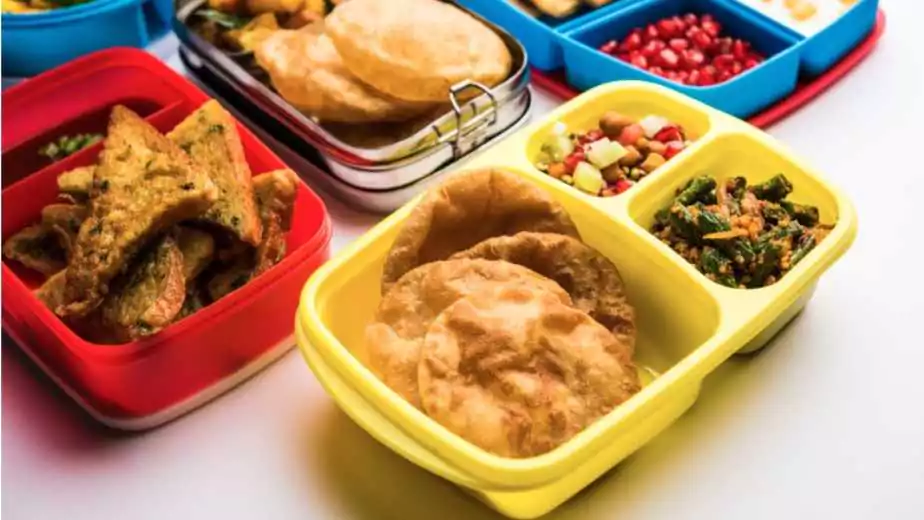
As parents, juggling busy mornings and preparing a nutritious and appealing school lunch for `our children is a daily challenge. A key issue many face is keeping these lunches warm. While it might seem minor, the impact of a warm meal is significant. It’s not only comforting, offering a taste of home, but also crucial for children’s health and satisfaction. Warm meals are often more nutritionally beneficial, providing the essential energy kids need for their day.
In this guide, we’ll explore a range of practical and innovative solutions to this common problem and learn how to keep kids lunch box warm. We aim to provide busy parents with effective methods, tips, and product recommendations to ensure their child’s lunch stays warm and enjoyable. Join us as we transform the routine task of packing lunch into an act of care and warmth for our children.
1 Understanding the Basics
The Science Behind Heat Retention
To effectively keep our kids’ lunches warm, it’s important to first understand the basic science of heat transfer and retention. Heat moves in three ways: conduction, convection, and radiation. When we pack a warm lunch, it gradually loses heat through these processes, eventually leading to a cooled meal. The key to heat retention lies in minimizing these heat loss pathways.
Conduction occurs when heat moves from a warmer object to a cooler one through direct contact. For instance, a warm sandwich placed in a cold lunch box will lose heat as the warmth transfers to the cooler surface of the box. Convection involves the movement of heat through air or liquid. In the context of a lunch box, this happens when warm air inside escapes as the lunch box is opened, or through the natural circulation of air within the box. Lastly, radiation is the transfer of heat in the form of infrared rays. A warm meal radiates heat, which dissipates into the surrounding cooler air.
Understanding these principles helps in selecting the right materials and methods for effective heat retention. Materials that are poor conductors of heat, known as insulators, are ideal for minimizing heat loss through conduction. Similarly, limiting air movement around the food can reduce convective heat loss.
Foods Best Suited for Staying Warm
Not all foods are equally suited to staying warm until lunchtime. The ideal candidates are those that retain heat well and don’t degrade in quality when kept at a warm temperature for a few hours. Here are some characteristics of such foods:
- Density: Denser foods, like mashed potatoes, lasagna, or rice dishes, retain heat longer than lighter, more airy foods.
- Moisture Content: Foods with a higher moisture content, such as stews, soups, and saucy pasta, can stay warm longer. The liquid in these foods retains heat well and ensures a consistent temperature throughout the dish.
- Fat Content: Foods with a bit of fat can also retain heat well, as fat is a good insulator. Dishes like cheese-laden casseroles or meaty dishes may stay warm longer.
- Combined Ingredients: Meals that combine ingredients, like a chicken and vegetable bake, can also maintain their temperature better than single-ingredient items.
2 Choosing the Right Lunch Box
Comparing Lunch Box Types and Insulation Properties
When it comes to keeping food warm, not all lunch boxes are created equal. The market offers a variety of options, each with its own set of insulation properties. Here’s a look at some common types:
- Thermal Insulated Lunch Boxes: These are specifically designed for heat retention. They often have layers of insulating materials like foam or polyethene, which are effective in slowing down the loss of heat through conduction and convection.
- Stainless Steel Lunch Containers: While they are excellent for durability and food safety, stainless steel containers need an additional layer of insulation to effectively retain heat. Some come with insulated carrying bags.
- Plastic Lunch Boxes: Generally lightweight and affordable, plastic lunch boxes can be good for heat retention if they are double-walled and airtight. However, they may not be as effective as specialised thermal boxes.
- Fabric Lunch Bags with Insulation: These are often made with layers of insulating materials and can be effective if they are properly sealed. They’re also flexible and easy to carry.
What to Look for in a Heat-Retaining Lunch Box
When shopping for a lunch box that will keep your child’s food warm, consider the following features:
- Insulation Quality: Look for lunch boxes with high-quality insulation materials. Multi-layered insulation is often more effective.
- Airtight Seal: An airtight seal is crucial in preventing convective heat loss. Ensure the lunch box closes securely.
- Size and Compartments: Consider the size of the lunch box and the number of compartments. It should be large enough to hold the food but not so large that there’s a lot of space, which can lead to faster heat loss.
- Durability and Safety: Choose materials that are durable and free from harmful chemicals like BPA. The lunch box should withstand regular use and cleaning.
- Ease of Use and Cleaning: Ensure the lunch box is user-friendly, especially for kids, and easy to clean, preferably dishwasher-safe.
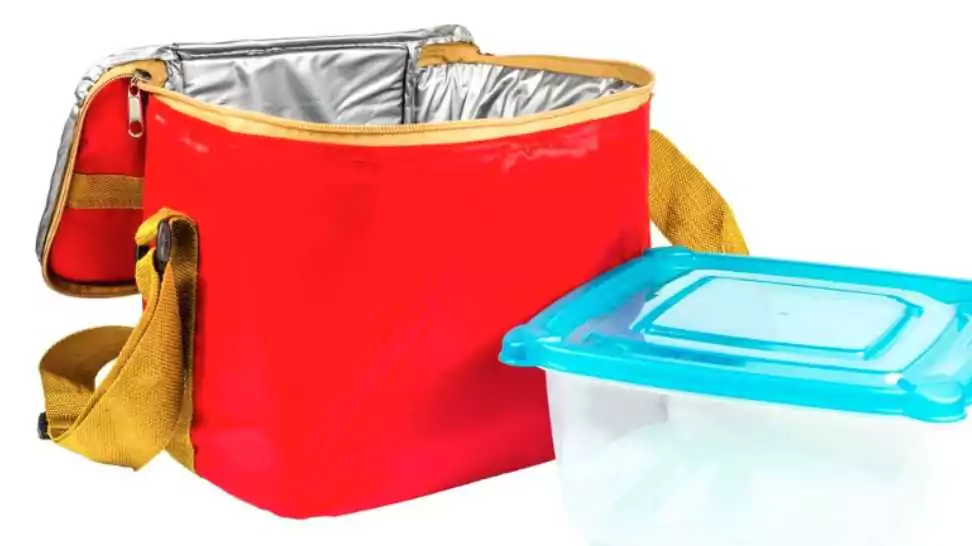
3 Pre-Warming the Lunch Box
Step-by-Step Guide to Pre-Warming a Lunch Box
Pre-warming your child’s lunch box is a simple yet effective technique to enhance its heat retention capabilities. Here’s how to do it:
- Boil Water: Begin by boiling water in a kettle or a pot. You need enough to fill the main compartment of the lunch box.
- Pour Hot Water into the Lunch Box: Carefully fill the lunch box with the boiling water. If you’re using a stainless steel or thermal lunch box, it’s safe to pour the water directly in. For plastic lunch boxes, check the manufacturer’s guidelines to ensure they can withstand boiling water without warping.
- Let It Sit: Close the lunch box and let it sit for about 5-10 minutes. This allows the heat from the water to transfer to the walls of the lunch box, warming it thoroughly.
- Empty the Lunch Box: Carefully empty the hot water from the lunch box. Be cautious to avoid any burns.
- Dry the Lunch Box (if necessary): If there’s any residual moisture inside, quickly wipe it down with a clean towel.
- Pack the Warm Food: Immediately pack the warm food into the pre-warmed lunch box. Ensure the lid is sealed tightly to maximise heat retention.
How Pre-Warming Helps in Keeping Food Warm
Pre-warming a lunch box works on the principle of heat transfer. By warming up the interior surface of the lunch box, you’re creating a thermal buffer that slows down the cooling rate of the food. When you place warm food into a pre-warmed lunch box, you reduce the temperature gradient between the food and the container. This means less heat is lost from the food to the lunch box, as the lunch box itself is already warm.
This method is particularly effective for lunch boxes made of materials with good heat retention properties, like stainless steel or insulated bento boxes. It’s a simple yet powerful trick to ensure that the food remains warm for a longer period, providing your child with a hot, home-cooked meal at lunchtime.
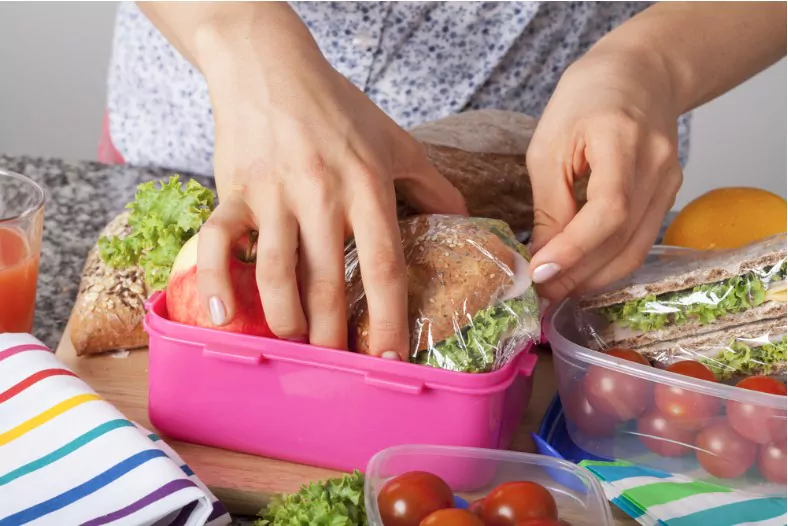
4 Hot Pack Hacks
Hot packs, often used for muscle aches, can be ingeniously repurposed to keep kids’ lunches warm. These packs are designed to retain and gradually release heat, making them perfect allies in our quest for warm school lunches. They come in various forms, including gel packs, grain-filled cloth bags, and more.
DIY Methods for Creating Homemade Hot Packs
- Rice or Wheat Bag: Fill a small cloth bag or a clean sock with dry rice or wheat. Tie it securely or stitch it closed. Microwave it for 1-2 minutes before placing it next to the food in the lunch box. Be careful not to overheat it.
- Salt-Filled Pack: Fill a heat-resistant bag with table salt. Seal it well and microwave for about 2-3 minutes. Salt retains heat effectively and is a handy, cost-effective solution.
- Soapstone or Ceramic Tile: These materials retain heat well. Heat a small piece in the oven (not too hot to handle) and wrap it in a cloth before placing it in the lunch box.
Always test the homemade hot pack first to determine the optimal heating time and to ensure it’s not too hot for the lunch box or the food.
Safety Tips for Using Hot Packs in Kids' Lunch Boxes
- Temperature Check: Ensure the hot pack is not too hot to the touch to avoid the risk of burns or melting the lunch box. It should be comfortably warm.
- Secure Packing: Wrap the hot pack in a cloth or towel to prevent direct contact with the food and to distribute the heat more evenly.
- Choose the Right Spot: Place the hot pack on top of the food containers if possible. Heat rises, so this position helps in keeping the food warm effectively.
- Monitor for Wear and Tear: Regularly check the condition of reusable hot packs. Any signs of wear, such as tears or leaks, mean it’s time to replace them.
- Educate Your Child: Teach your child how to handle the lunch box with a hot pack inside. They should know not to open it unnecessarily and how to safely remove the hot pack before eating.
5 Packing Techniques
Maximising Heat Retention Through Smart Packing
Packing your child’s lunch with heat retention in mind involves a combination of techniques and the right materials. Here’s how you can do it effectively:
- Use Insulated Containers: Start with a pre-warmed, insulated container. Thermos-style containers are ideal for hot foods like soups, stews, or pasta.
- Pack Food Tightly: Fill the containers to the top if possible. Less air space means less opportunity for heat to escape.
- Layer with Insulation: Wrap the container in aluminium foil, which reflects heat into the food, helping to retain its temperature.
- Use Divider Containers: If the lunch box has dividers, use them to separate cold items from warm ones to prevent heat transfer.
- Seal Tightly: Ensure that the lids on all containers are tightly sealed to keep the heat in and prevent spills.
The Role of Aluminum Foil and Other Insulating Materials
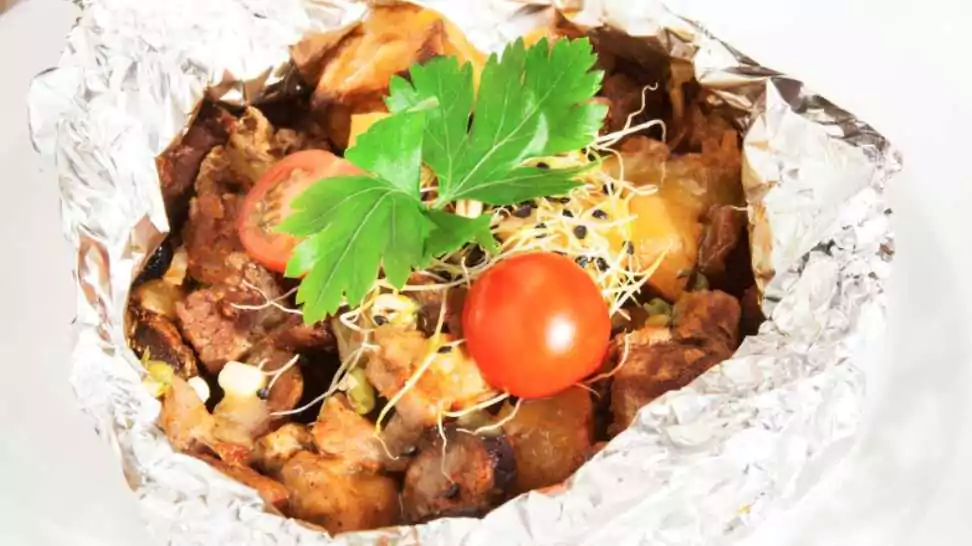
Aluminium foil is a great insulator because it reflects heat towards the food. Wrapping a hot container in foil can significantly increase the time the food stays warm. Other insulating materials include:
- Insulated Lunch Bags: Use these bags along with the containers for an added layer of heat retention.
- Bubble Wrap or Foam Sheets: These can be used as additional insulation wrapped around the food container.
Creative and Nutritious Hot Lunch Ideas
Here are some ideas for hot lunches that are both nutritious and appealing:
- Vegetable Fried Rice: A combination of rice, vegetables, and a protein like chicken or tofu, packed in a pre-warmed container.
- Cheesy Vegetable Bake: A mix of favourite vegetables and cheese baked and packed while still warm.
- Soup and Sandwich Combo: A classic, with the soup in a thermos and a sandwich wrapped in foil.
- Pasta in Creamy Sauce: Whole grain pasta with creamy cheese or tomato sauce, with added proteins like chicken or beans.
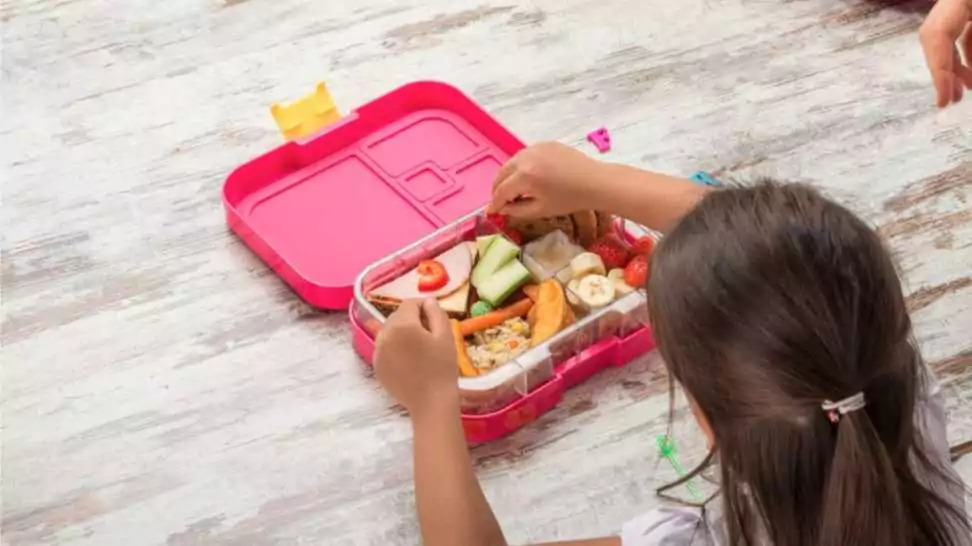
6 Foods That Stay Warm Longer
Foods with Natural Heat Retention Properties
Some foods have inherent qualities that allow them to retain heat longer, making them ideal candidates for warm school lunches. Here’s a list of such foods:
- Starchy Foods: Rice, potatoes, and pasta have a dense structure that helps them retain heat.
- Protein-rich Foods: Items like meatballs, baked chicken, and fish maintain their warmth due to their density and texture.
- Thick Soups and Stews: The liquid content in soups and stews retains heat well, especially when packed in a thermos.
- Casseroles: Layered dishes, such as lasagna or shepherd’s pie, hold heat in each layer.
- Steamed Vegetables: Dense vegetables like broccoli, carrots, and cauliflower can stay warm, especially when steamed.
Kid-Friendly Warm Lunch Recipes
- Cheesy Chicken Quesadilla: Fill a tortilla with grilled chicken, cheese, and beans. Grill it and wrap it in foil before packing.
- Vegetable Fried Rice with Egg: A colourful and nutritious option that includes vegetables, rice, and scrambled egg, all of which retain heat well.
- Pasta with Hidden Veggie Marinara Sauce: Whole wheat pasta with a thick marinara sauce made with pureed vegetables. It’s healthy and stays warm for hours.
- Hearty Vegetable Soup: A mix of vegetables, beans, and perhaps some pasta or rice in a rich broth, packed in a pre-warmed thermos.
7 Additional Tips and Tricks
Miscellaneous Tips for Keeping Food Warm

Beyond the traditional methods, there are several additional tips you can employ to ensure your child’s lunch remains warm:
- Thermos Containers: Invest in a high-quality thermos for liquids like soups or stews. Preheat the thermos with hot water before adding the food.
- Layer with Cloth Napkins: Use cloth napkins or small towels as an extra layer of insulation. Wrap them around the food containers before placing them in the lunch box.
- Use Hot Water Bottles: Small hot water bottles can be placed in the lunch bag to help maintain a warm temperature.
- Combine Hot and Cold Foods Thoughtfully: If you’re packing both hot and cold foods, use separate containers. Insulate them from each other to prevent heat transfer.
- Pack Larger Portions: Larger quantities of food retain heat longer than smaller portions, due to their mass.
- Use Silicone Cupcake Liners: These can be used to create sections within a container, reducing air space and helping to keep food warm.
Food Safety and Avoiding Foodborne Illnesses
While keeping food warm is important, food safety should always be a top priority. Here are some tips to minimise the risk of foodborne illnesses:
- Maintain Safe Temperatures: Keep hot foods at or above 140°F (60°C) to prevent bacterial growth. Use a food thermometer to check temperatures if unsure.
- Avoid Cross-Contamination: Always use clean containers and utensils when packing food. Avoid cross-contamination between raw and cooked foods.
- Reheat Food Properly: If cooking food in advance, ensure it’s reheated to at least 165°F (75°C) before packing.
- Mind the Cooling Time: Don’t let cooked food sit out at room temperature for more than 2 hours before packing.
- Teach Your Child Food Safety: Educate your child on the importance of eating their hot lunch within a reasonable time and not sharing utensils with others.
- Regular Cleaning: Regularly clean lunch boxes, containers, and thermos to prevent the build up of harmful bacteria.
8 Engaging Your Kids
Involving Kids in Preparing Their Warm Lunch
Getting your kids involved in the lunch preparation process can be a fun and educational experience. Here are some ideas:
- Menu Planning: Let your child help plan their weekly lunch menu. This can include choosing which warm dishes they would like.
- Cooking Together: Involve your child in the cooking process. Simple tasks like stirring, assembling ingredients, or packing the food can be exciting for them.
- Themed Lunch Days: Create themed lunch days like ‘Soup Wednesday’ or ‘Pasta Friday’ to make lunchtime more engaging.
- Decorating Lunch Boxes: Encourage them to decorate their lunch boxes or bags with stickers or markers, making the lunch experience more personalised.
- Learning About Ingredients: Teach them about the ingredients used in their lunches, highlighting the nutritional values and health benefits.
Teaching Kids About Food Temperature and Safety
Understanding the importance of food temperature and safety is crucial for kids. Here’s how to educate them:
- Explaining the ‘Why’: Explain why it’s important to keep certain foods warm, focusing on both the taste and health aspects.
- Food Safety Basics: Teach them basic food safety principles, such as washing hands before eating and not leaving food out for too long.
- Use of Thermometers: Show them how to use a food thermometer to check food temperatures, making it a part of the packing ritual.
- Responsibility for Their Lunches: Teach them to be responsible for their lunch, like making sure the lunch box is closed properly and telling an adult if the food doesn’t seem right.
- Interactive Learning: Use fun, interactive games or quizzes to reinforce the concepts of food temperature and safety.
9 Wrapping Up
In this guide, we’ve provided a range of tips and strategies for keeping kids’ lunches warm. We’ve covered the science behind heat retention, the best types of lunch boxes, effective pre-warming methods, hot pack usage, and smart packing techniques. We’ve also suggested foods that retain heat well and offered nutritious, kid-friendly recipes.
Every child and situation is different, so it’s beneficial to experiment with these methods to discover what best suits your family’s needs. Whether it’s adjusting recipes or choosing the right lunch box and hot pack, finding the right approach can significantly enhance your child’s lunchtime experience. Remember, a warm lunch is more than just food; it’s comfort and a piece of home for your child at school. Use these insights to ensure their lunch is not only warm but also enjoyable.
Community Q&A
About This Article
This article has been viewed 83 times.



